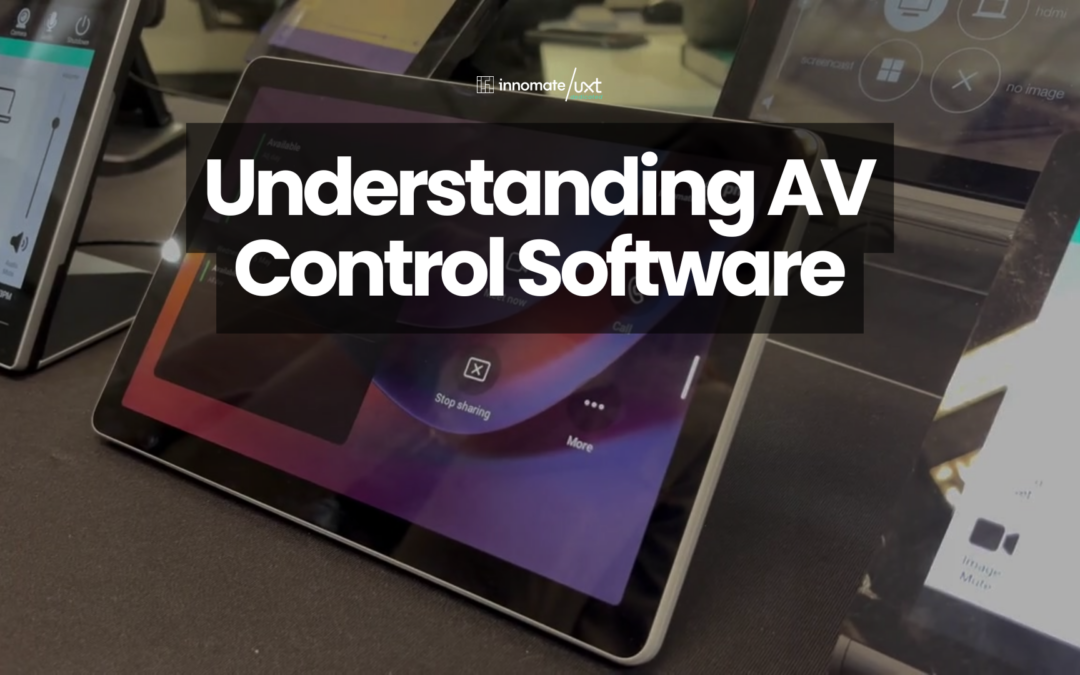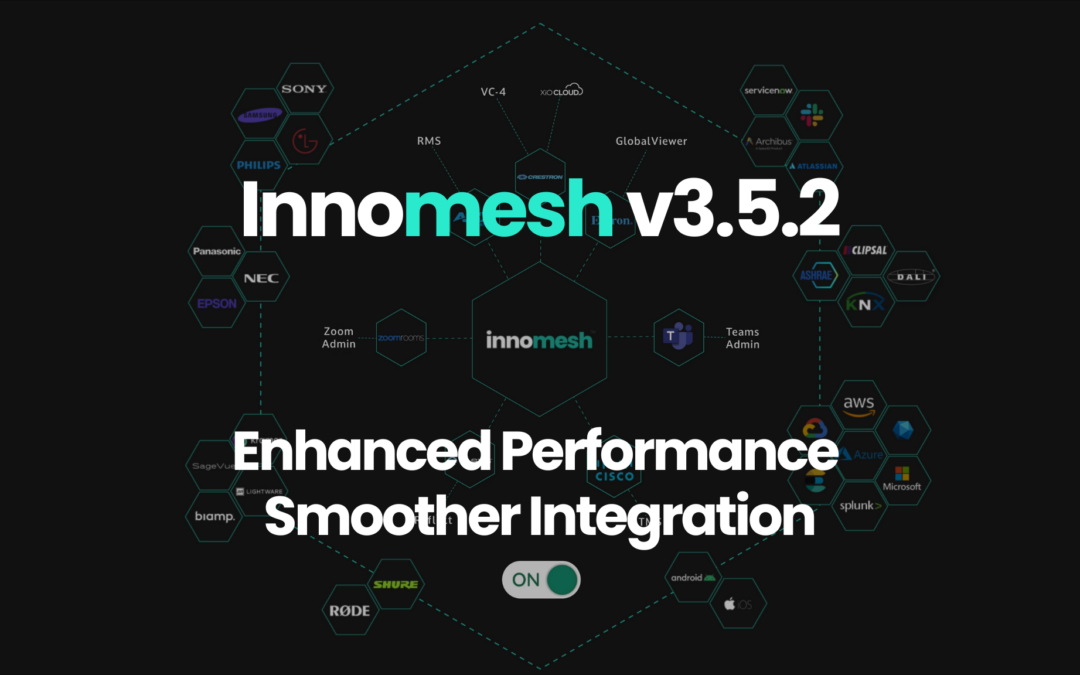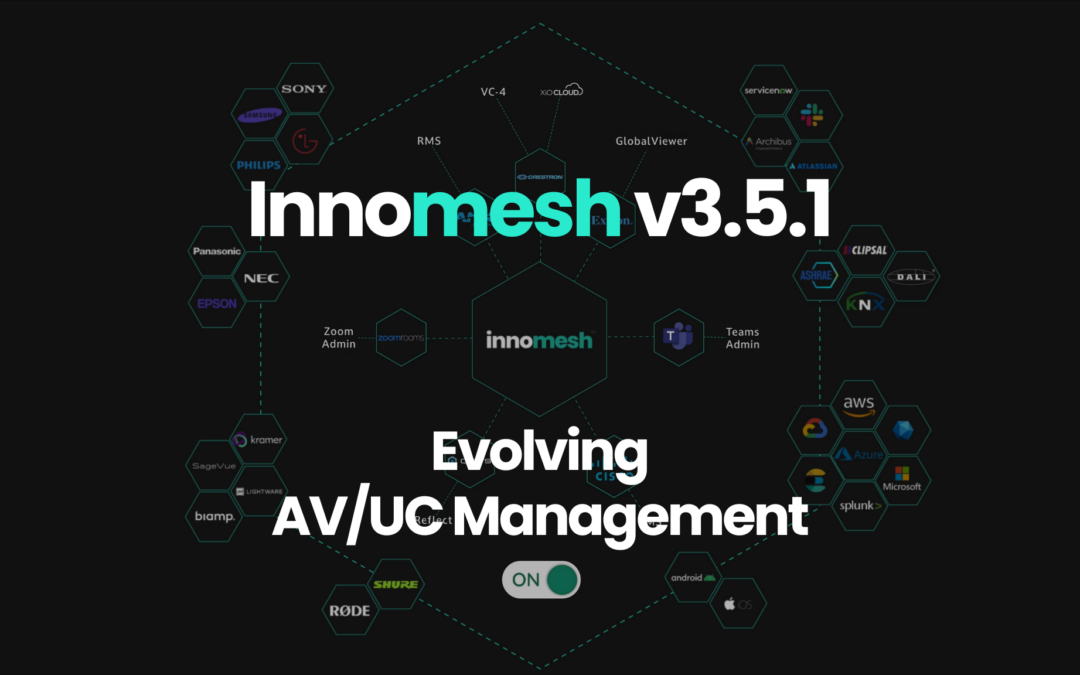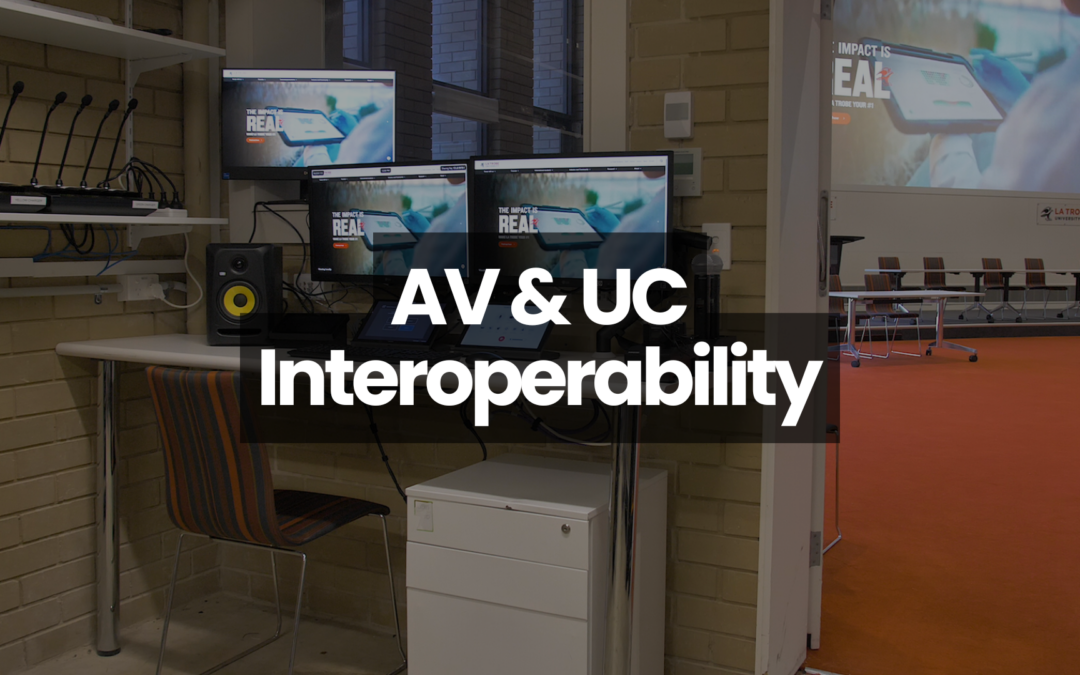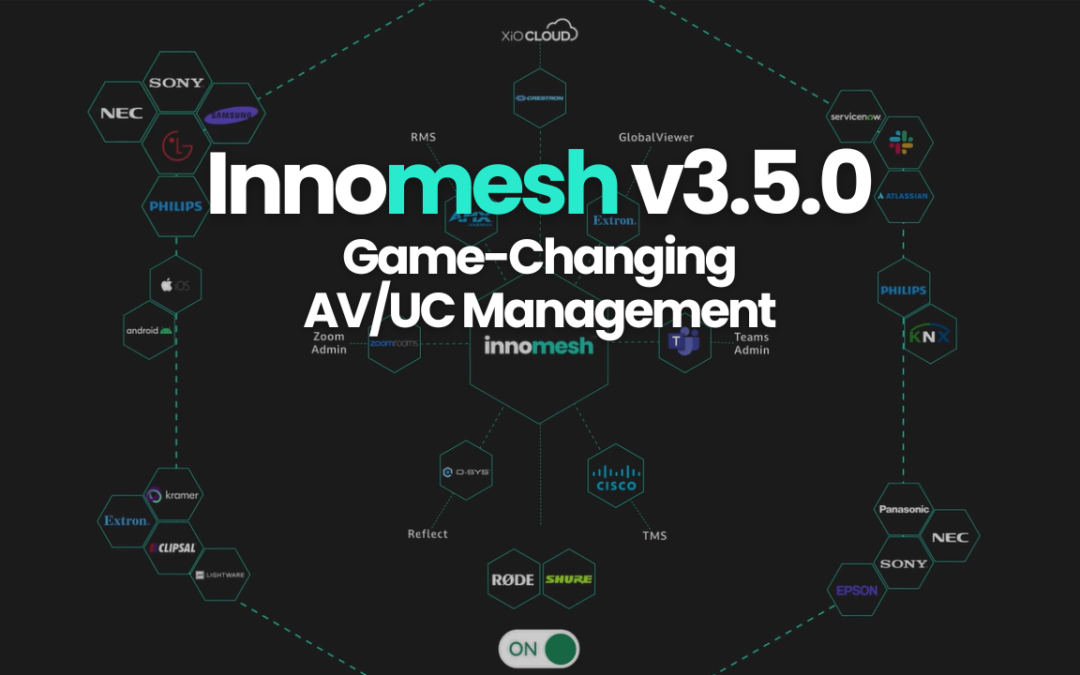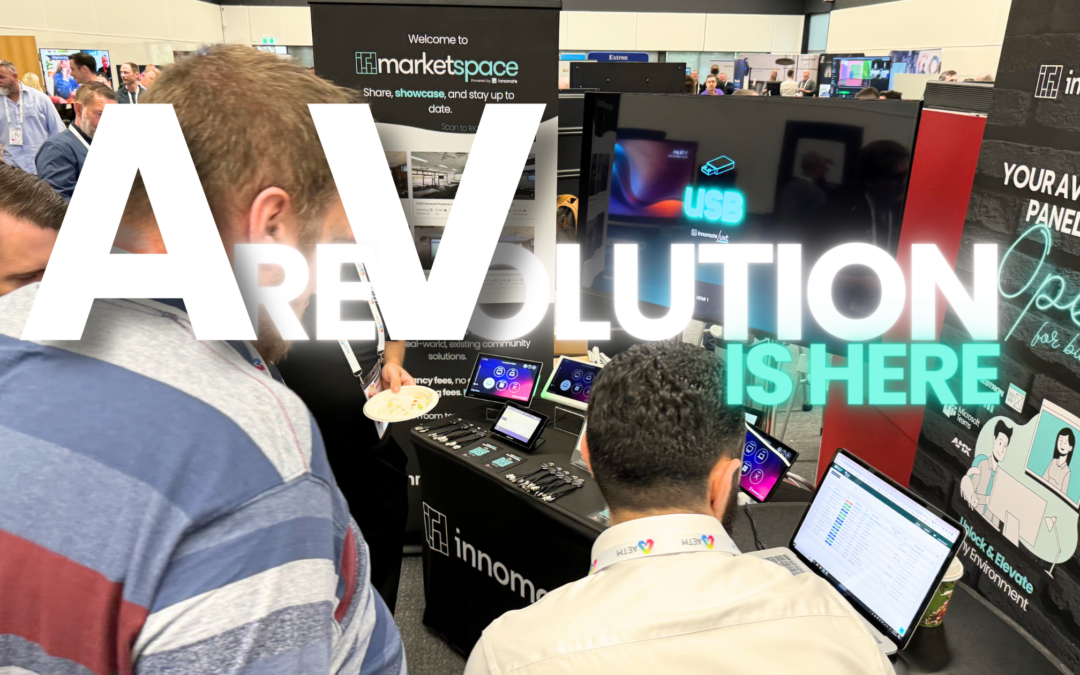Unlock the Potential of AV Control Software: Simplifying Audio Visual Experiences
You can’t escape the fact that Audio Visual (AV) technology has become an integral part of our daily lives. AV control systems are everywhere: in corporate offices, educational institutions, hospitals, and government departments. However, managing multiple AV devices individually can be incredibly frustrating, time consuming, and expensive. So, what’s the solution? Enter AV control systems – a game-changer transforming how we manage and experience enterprise AV technology. These systems allow you to control all your devices from a single platform, simplifying operations and enhancing your overall experience.
In this article, we’ll explore the world of AV control software and how it elevates your audio visual experience. We’ll also introduce some of the main AV control system manufacturers and reveal a powerful tool that organisations and AV integrators should know about.
What Are AV Control Systems?
Before investing in an enterprise AV control system, it’s crucial to understand why they are so valuable. Consider this: how would you feel if you had to operate every AV device individually or pay a hefty salary to multiple professionals to manage your setup? Not a great idea, right? This is where AV control software becomes essential.
An AV control software platform automates the management of all your AV devices from a single point of access, saving you from the hassle of learning (and staying up to date with) the specifics of various devices. Instead of wasting time and resources, you can invest in a solution that offers ten times the efficiency and better results.
Two Approaches to AV Control
“AV control” refers to managing and automating audio visual equipment in various environments, ranging from meeting rooms to large entertainment venues. In this context, there are two primary approaches to AV control: “Room Control” and “Show Control.” Let’s explore each of these:
Room Control: Room control focuses on managing AV systems within specific spaces, such as a conference rooms, teaching spaces, or boardrooms. The objective is to provide a seamless and user-friendly experience for anyone using the AV equipment, even if they’re not particularly tech-savvy.
Key Features of AV Room Control:
- User-friendly interfaces
- Automation and preset configurations
- Simple operation
- Limited complexity for easy management
- Observability for AV support teams
- Automation of updates
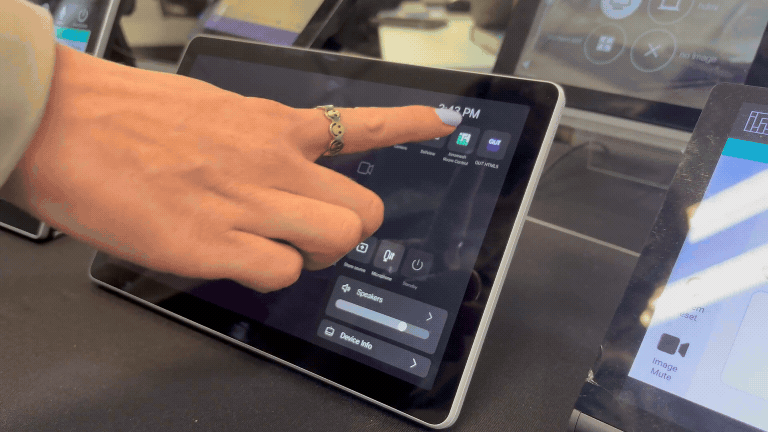
A Cisco Navigator Room Kit Touch Panel running on Innomesh with a Pageflip to a native Microsoft Teams Rooms UI
Show Control: Show control, on the other hand, is designed for larger-scale events, performances, or productions. This type of control is commonly used in venues like theatres, stadiums, concert halls, and theme parks, where AV teams must ensure that multiple AV elements are synchronised for a reliable and cohesive experience.
Key Features of Show Control:
- High-level coordination
- Timeline-based programming
- Complex sequencing
- Cue-based operations with redundancy for reliability
A Brief History of AV Room Control Devices
As we heard in this recent episode of our podcast, I Know Mate, AV control systems have come a long way since the 1970s. In the early days, presentations relied heavily on pre-produced slides and audio, which required a large team to manage the screens, lighting, and sound. By the mid-1980s, the landscape started to change with the advent of computers, leading to the creation of computer-operated control systems. Companies like IBM and AMX were pioneers in offering these solutions, which simplified complex AV tasks.
By the 2000s, AV control systems had become more accessible and were no longer limited to large corporations. Even smaller businesses began adopting these solutions, with brands like AMX exploring ways to integrate control systems with lighting, IT, and network systems. The introduction of touchscreen technology in the late 2000s, followed by the rise of devices like the iPad, further revolutionised how we interact with AV control systems.
Today, the industry continues to evolve, with AV control software platforms becoming more sophisticated, user-friendly, and widely available across various implementation scales.
What Can AV Control Systems Do?
The capabilities of AV control systems are extensive and vary depending on the manufacturer, model, and specific configurations. Here are some of the core features that a robust AV control software platform can offer:
- Centralised Access: Manage multiple AV devices from one interface.
- Automation: Automate routine tasks to save time and effort.
- Preset Configurations: Create presets for different scenarios, such as meetings, presentations, or learning spaces.
- System Integration: Integrate with other systems, such as UC applications, room booking systems, lighting, HVAC, and security.
- Remote Access: Control your AV systems from anywhere in the world.
- Monitoring and Alerts: Monitor your systems and receive alerts when issues arise.
- Analytics: Gather usage data to optimise system performance.
- Accessibility: Improve access for users with disabilities.
- Enhanced Security: Strengthen the security of your AV setup.
- Energy Efficiency: Save energy and reduce your environmental footprint.
- Improved User Experience: Enhance the overall experience for all users.
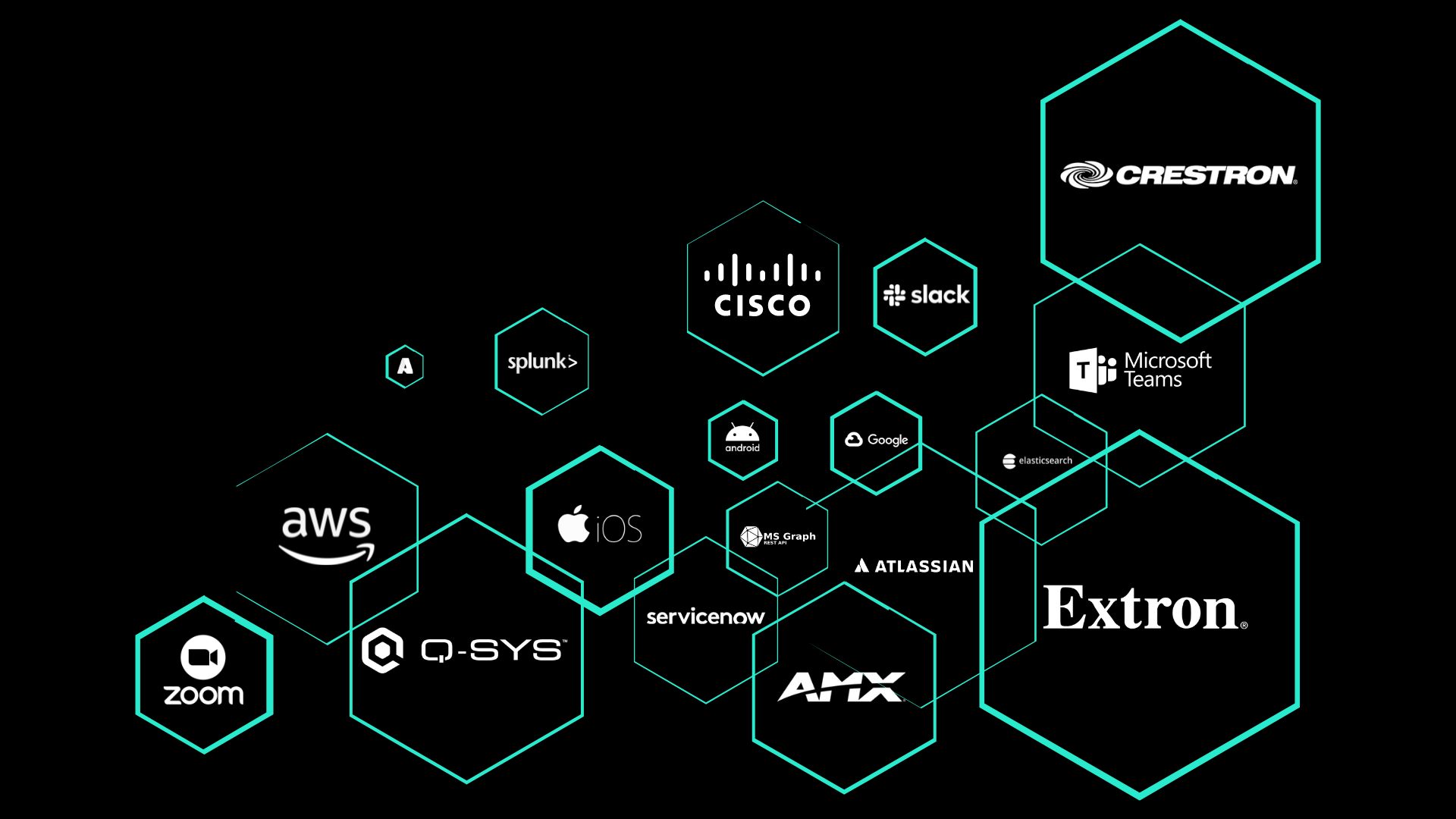
Just some of the AV Manufacturers Innomesh unifies into a single platform for AV control
Major AV Control System Manufacturers: Seamless Integration with Innomesh
Now that you have a solid understanding of AV control systems, you may wonder which brands lead the industry. Here are some of the major manufacturers of audio-visual control software that can be found across the majority of large organisations:
- Extron: Known for mastering audio-visual control, Extron engineers high-quality systems that integrate technology seamlessly, creating immersive and connected experiences.
- Crestron: Crestron pioneers smart solutions in the AV industry. Their control platforms synchronise devices, lighting, and more, crafting an effortless and modern experience.
- Kramer: Kramer’s AV solutions are designed for seamless connectivity, making collaboration a focal point of every interaction through their highly functional control platforms.
- AMX: A leader in AV technology, AMX delivers versatile control systems that transform spaces into interactive environments, making them a top choice for AV integration.
- Q-SYS: Q-SYS is an audio, video, and control (AV&C) platform developed by QSC, designed to deliver scalable and flexible solutions for professional AV environments.
- Cisco: Cisco is a worldwide technology leader. Our purpose is to power an inclusive future for all through software, networking, security, computing, and more.
The important factor to consider, given the sheer volume of AV control manufacturers available, is to make sure you’re using an overarching platform that is device and vendor-agnostic.
Conclusion
So, are you ready to leave behind the complexity and cost of traditional AV setups and embrace the simplicity of an overarching AV control software platform?
With the ability to create seamless, immersive environments at the touch of a button, AV control systems are redefining how we experience audio-visual technology.
The question remains: will you join the revolution and unlock a new level of control for your AV systems? With AV control software like Innomesh, achieving your audio visual and unified communications goals has never been easier. It’s time to simplify and elevate your AV environment. Take control of your spaces with Innomesh – and tame the AV control chaos.

